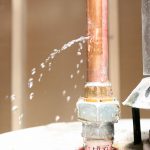Foundation leaks can be a homeowner’s worst nightmare, leading to structural damage, dampness, and even health hazards like mould. Left unchecked, they can compromise the stability of your home. Identifying the causes and applying appropriate solutions is critical to keeping your foundation—and your property—strong, dry, and safe. In this article, we’ll discuss what causes foundation leaks, how to detect them, and the best solutions to fix and prevent future issues.
What Are Foundation Leaks?
Foundation leaks occur when water seeps through cracks, gaps, or weaknesses in a home’s foundation. These leaks often manifest as damp walls, pooling water, or mould growth in basements and crawl spaces. While they might seem minor initially, foundation leaks can worsen over time, resulting in costly repairs.
Common Causes of Foundation Leaks
1. Poor Drainage Around the Foundation
Improper drainage is one of the leading causes of foundation leaks. If water pools around your foundation due to blocked gutters, poor grading, or faulty downspouts, it increases hydrostatic pressure, forcing water into small cracks.
2. Cracks in the Foundation
Over time, foundations can develop cracks due to soil movement, temperature changes, or natural wear and tear. Even tiny cracks can let moisture seep through, especially during heavy rains.
3. Expansive Soil Conditions
Some types of soil, like clay, expand and contract depending on moisture levels. During rainy seasons, the soil expands and exerts pressure on the foundation, causing cracks. In dry seasons, the soil contracts, leaving gaps where water can flow through.
4. Poor Construction
If a foundation is not properly waterproofed during construction, it becomes vulnerable to leaks. A lack of sealing materials or improper installation can create pathways for water to penetrate.
5. Hydrostatic Pressure
Excessive groundwater around the foundation builds up pressure, known as hydrostatic pressure. This force pushes water into cracks, joints, or porous concrete, leading to leaks.
6. Plumbing Leaks
Leaky pipes located near or under the foundation can saturate the soil, creating an environment conducive to leaks. Over time, this added moisture weakens the foundation’s integrity.
7. Heavy Rain or Flooding
Prolonged periods of rain or flooding increase soil saturation, placing undue stress on the foundation. This is particularly common in older homes where waterproofing materials may have deteriorated.
How to Detect Foundation Leaks
Early detection of foundation leaks is crucial to prevent long-term damage. Here are key signs to watch for:
- Damp Patches on Walls or Floors: Moisture stains, damp carpets, or walls can indicate water intrusion.
- Pooling Water: Water collecting in basements or crawl spaces is a clear sign of a leak.
- Mould or Mildew Growth: Excess moisture promotes mould, which often gives off a musty odour.
- Cracks in Walls or Floors: New or widening cracks in your foundation can point to ongoing leaks.
- Increased Humidity Levels: A persistently humid basement or crawl space may signal a hidden leak.
To confirm the source of moisture, consider using tools like moisture meters or thermal imaging cameras. These tools can help pinpoint leaks without invasive inspections.
Solutions for Foundation Leaks
Once you identify a foundation leak, addressing it promptly is key. Here are the most effective solutions:
1. Fixing Cracks in the Foundation
- Epoxy Injection: For small cracks, injecting epoxy or polyurethane foam seals the gaps and prevents further water intrusion.
- Hydraulic Cement: For larger cracks, hydraulic cement effectively seals leaks and withstands hydrostatic pressure.
2. Improving Drainage Systems
- Install French Drains: A French drain redirects groundwater away from your foundation using a trench and perforated pipe system.
- Clean and Extend Gutters: Ensure gutters and downspouts channel water at least 2-3 metres away from the foundation.
- Regrading the Landscape: Reshape your yard to slope away from your home, preventing water pooling near the foundation.
3. Waterproofing the Foundation
- Exterior Waterproofing: This involves excavating the soil around the foundation, applying waterproof membranes, and installing drainage systems. Although labour-intensive, it is highly effective.
- Interior Waterproofing: Applying waterproof coatings to basement walls or installing sump pumps to redirect water prevents flooding.
4. Installing Sump Pumps
Sump pumps are essential for homes prone to basement leaks. They collect water and pump it away from your foundation, keeping the area dry.
5. Addressing Soil Issues
For homes with expansive soils, stabilising the ground can prevent further foundation movement. This may include soil injection treatments or installing root barriers to control moisture levels.
6. Repairing Plumbing Leaks
If the leak originates from plumbing, hire a professional plumber to repair or replace damaged pipes. This stops water from saturating the soil beneath the foundation.
7. Using Vapor Barriers
Installing vapor barriers in crawl spaces prevents moisture from the ground seeping into the foundation. These barriers also improve indoor air quality by reducing humidity levels.
Preventative Measures to Avoid Foundation Leaks
Preventing foundation leaks saves money and protects your property from significant damage. Here’s how you can be proactive:
- Regularly Inspect Your Foundation: Check for cracks, damp spots, and pooling water around your home.
- Maintain Gutters and Downspouts: Clear debris regularly to ensure proper water flow.
- Seal Foundation Cracks Early: Address minor cracks as soon as they appear to prevent worsening leaks.
- Install a Drainage System: A combination of French drains, sump pumps, and proper grading ensures water stays away from the foundation.
- Waterproof Basements and Crawl Spaces: Apply waterproof coatings and install moisture barriers during construction or renovations.
When to Call a Professional
While some minor leaks can be fixed with DIY methods, persistent or severe foundation leaks require professional help. Here’s when you should consult an expert:
- The foundation has large cracks or widespread water damage.
- Persistent mould growth is affecting indoor air quality.
- The leak is causing structural issues like wall bowing or floor settling.
- Previous attempts to fix the leak have been unsuccessful.
Professional foundation repair specialists can assess the damage, recommend appropriate solutions, and ensure long-lasting results.
Conclusion
Foundation leaks are more than a mere inconvenience; they can compromise your home’s structural integrity and lead to costly repairs. By understanding the causes—such as poor drainage, soil conditions, and cracks—and applying the right solutions, you can protect your foundation and maintain a dry, healthy living environment. Regular maintenance, effective drainage systems, and timely repairs are the keys to keeping foundation leaks at bay.
FAQs About Foundation Leaks
1. What causes foundation leaks?
Foundation leaks are caused by poor drainage, soil movement, plumbing leaks, and cracks in the foundation due to hydrostatic pressure or construction flaws.
2. Can foundation leaks cause mould?
Yes, foundation leaks create damp conditions that promote mould and mildew growth, which can pose health risks.
3. How do I know if I have a foundation leak?
Signs include damp walls, pooling water, mould growth, and cracks in walls or floors. You can also use moisture meters for detection.
4. How can I fix foundation leaks myself?
Minor cracks can be sealed using epoxy injections or hydraulic cement. However, more severe leaks require professional waterproofing or drainage solutions.
5. How much does it cost to repair a foundation leak?
Costs vary depending on the severity of the leak. Minor repairs may cost a few hundred pounds, while extensive waterproofing projects can range from £1,000 to £5,000 or more.





